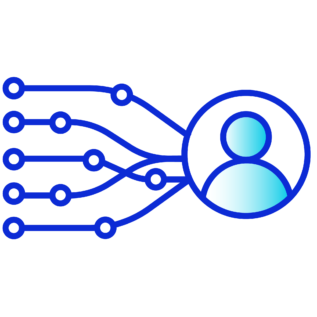
The EOSC Exchange is a catalogue and marketplace which are made up of components including onboarding workflow and data transfer services, service and research product catalogues and dashboards, and EOSC resource search, discovery and recommender services. Together, these allow users to access, order and compose an expansive range of research expertise and resources can be discovered, ordered and shared. These resources cover storing, preserving and exploiting FAIR data, encouraging its re-use and maximising the value of research investment.
EOSC Core provides the backend, non-researcher facing services essential for EOSC, whereas the Exchange consists of resources and services onboarded by science clusters, e-Infrastructures and other research communities, research projects, research infrastructures and SMEs to meet the needs of not only research communities but also the general public and private sector. A prerequisite of the onboarding process is compliance with the EOSC Rules of Participation, in accordance with inclusion criteria developed by EOSC Future.
Stated simply, the EOSC Exchange served as an enabler for more Open Science, encouraging wider exploitation and re-use of resources, more fully realising the potential of research outputs.
TARGET GROUPS
- researchers, research communities
- SMEs, industry
- service providers
STATE OF PLAY
The EOSC Future project focused on:
- onboarding resources from research cluster projects, other research infrastructures and research communities, e-Infrastructures and the private sector
- the first procurement of ‘horizontal’ resources (compute, storage, network) through the INFRAEOSC-07 projects.
This KER extended to:
- analysing and clarifying the most workable way to expose (and make more ‘findable’) the resources contained in the catalogues on the EOSC Portal
- identifying the best mechanisms for users to request access to IT resources, and how to account for their use (e.g. by implementing appropriate support mechanisms for the use of resources, identifying the long-term funding model for these resources)
- addressing the usability of the software and services exposed through the EOSC Portal: how they can be adapted to new user needs, how they can be supported between service providers and users.
Key benefits/impact for EOSC
The EOSC Exchange is today a combination of a central catalogue with directly onboarded services, and pointers (“Data Sources”) to thematic, regional/national, and other domain-based catalogues. Such a distributed/federated model is clearly more scalable and sustainable in the long term. How the central Exchange catalogue and the federated domain-based catalogues are actually used should be continually monitored and evaluated, and the overall Exchange model adapted and optimised accordingly in the light of real experience with how the user community behaves.
The EOSC Exchange, in the form of the Catalogues and Marketplace, provides the opportunity for the science communities to expose their resources more broadly – data, software, services, publications – for possible use by others, including by other scientific communities; users of EOSC are provided with the opportunity to find resources of use to them. As can be seen from its description and unique value proposition, EOSC Exchange is a fundamental asset for EOSC, without which EOSC lacks the facility to expose resources to users, and hence to contribute to Open Science.
The Catalogues and Marketplace are included in the scope of the ongoing EC procurement of the EOSC Core and elements of the Exchange, providing them with a future exploitation and sustainability path, at least for the next three years. Assuming sustained funding, the impact of the resources will grow steadily/exponentially in the future as combined datasets are created, forming new valuable resources to be further built on by other researchers and so on.
